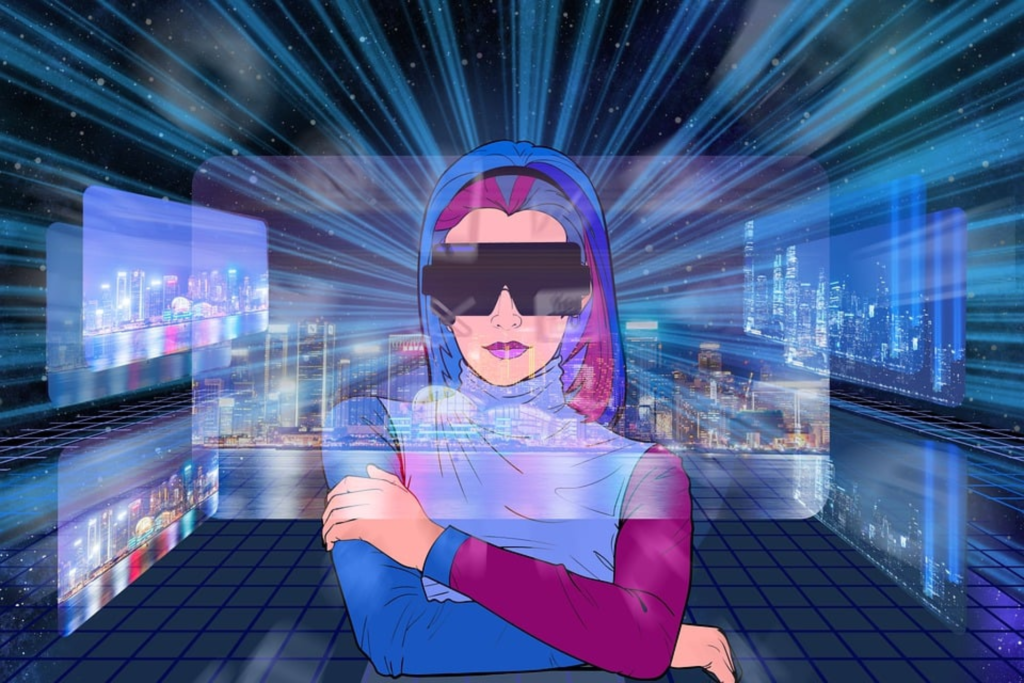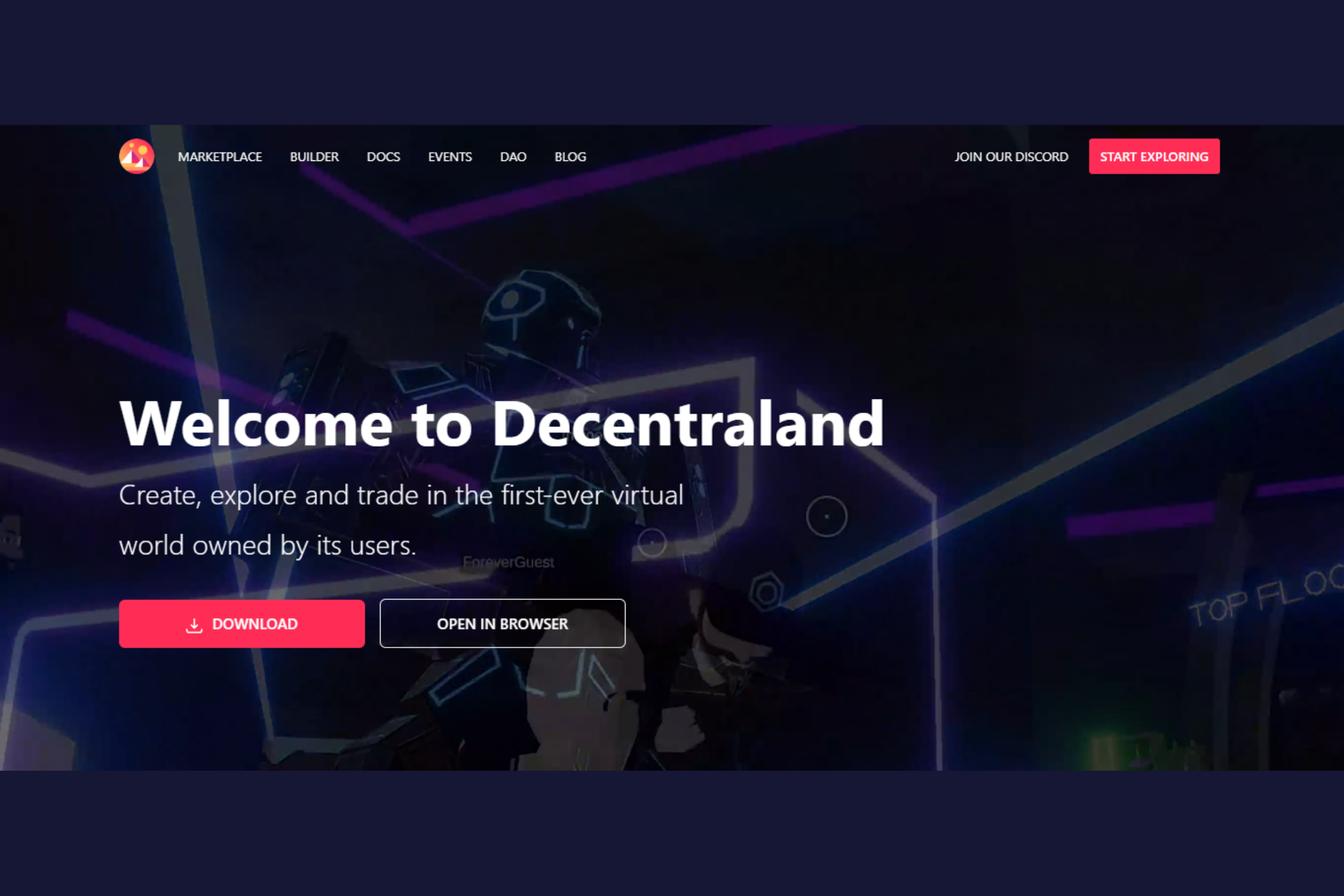Everything to Know About Decentraland, MANA, and LAND?
Decentraland (MANA) is a thriving metaverse where users can buy virtual real estate, create avatars, purchase wearables, and attend live concerts and events. Users can construct this platform’s decentralized programs, games, and dynamic 3D environments. This three-dimensional VR platform gives a realistic experience by allowing users to interact with thousands of other users.
Decentraland is different in that it’s the first decentralized virtual reality platform that allows users to connect. It means that users can purchase and develop land parcels without dealing with a centralized authority.
Decentraland (MANA) History
Decentraland was created by Esteban Ordano and Ariel Meilich based on the concept of human evolution. The initial version of the Decentraland metaverse, Stone Age, was released in 2015. It was created in the shape of an infinite 2D grid to provide users control over the digital environment.

The second version, dubbed “the bronze age,” was released at the end of 2016. Users could create apps and chat with other users in a 3D world with this version. Decentraland’s current version was released in 2017 and is supported by Ethereum. This version gives a realistic experience while allowing users to move quickly.
How Does Decentraland Work?
Decentraland provides an infrastructure that allows users to buy and sell virtual real estate while interacting with one another. Decentrand’s protocol is divided into three layers.
- A LAND content layer in charge of assisting users who want to buy or sell virtual real estate
- The consensus layer keeps track of smart contracts generated by users when they purchase a LAND or other pieces of material
- A real-time layer that allows users to communicate with one another via a peer-to-peer protocol
What is LAND?
A LAND is a virtual piece of property identified by a unique set of Cartesian coordinates, whereas content might range from avatars to 3D scenery, games, apps, or other things. Each LAND parcel is 16×16 in size, and there are 90,601 LAND parcels in the Decentraland metaverse.
The LAND owner can either store contents in the LAND parcel or rent the plot to someone who wants to participate in the Decentraland metaverse but cannot afford to acquire the LAND.
What are LAND Estates?
The LAND portions are utilized for more than simply amusement and entertainment. Companies can also utilize them to set up virtual offices in the metaverse. Such activities would necessitate purchasing several LAND parcels rather than a single one.
In the Decentraland metaverse, this collection of LAND parcels is known as LAND Estates. It is important to note that all LAND parcels must be contiguous to one other, or they will not be included in the Estate. As a result, deciding at the time of purchase is crucial because it may be difficult to find a LAND parcel close to your LAND parcel later on.
Decentraland Tokens
MANA
MANA is Decentraland’s primary token to buy virtual real estate and other virtual assets. Only users with MANA tokens in their digital wallets can access the Decentraland metaverse. However, MANA is not the only native token of this metaverse. Another native token on this platform is LAND.
LAND
LAND is a nonfungible token (NFT) that represents metaverse parcel ownership. Each LAND token, like other NFTs, has a unique code. MANA’s price fluctuates based on supply and demand on exchanges. However, in the case of LAND, the buyer and seller agree on the token’s price.
Tokenomics
When the project was first established, MANA had a circulating supply of 2.8 billion coins. Unlike other cryptocurrencies, its circulation supply has decreased over time because users must burn their MANA tokens to acquire LAND in this metaverse. The circulating supply of MANA has fallen to 1.86 billion coins and is continuing to fall due to the rapidly increasing demand for LAND.
Decentraland is User Governed
Decentraland has shown to be a fully decentralized virtual environment by granting users control over the platform. Based on the recommendations provided by users, the organizers choose the path of Decentraland. Users can submit proposals for various activities on the platform if they have MANA or have acquired a LAND in the metaverse.
Some analysts believe that Decentraland’s strategy may need to change in the future since the demand for LAND is rapidly expanding, which will significantly increase its user base.
Decentraland Wearables
The interest in Decentraland wearables has recently surged. Some people try to make their avatars unique and distinct to stand out from the crowd. Decentraland wearables are classified into five categories, which include:
- Uncommon
- Swanky
- Epic
- Legendary
- Mythic
Some wearables are easily accessible on the market. Users can purchase wearables from the marketplace or create their own. Wearables contain various elements such as a head, hat, hair, facial hair, helmet, body shape, clothing, and more.
Decentraland wearables can be an excellent choice for those unable to obtain LAND parcels early because LAND has now become quite expensive.
Conclusion
Decentraland (MANA) is one of the most prominent metaverses, gaining popularity following Facebook’s announcement to rename it, Meta. This metaverse aims to provide a realistic experience in the digital world. MANA and LAND are the platform’s native tokens that you can use for local transactions.
This article covers everything you need to know about Decentraland, MANA, and LAND. Don’t hesitate to contact us if you require additional information on this metaverse or its native token.











